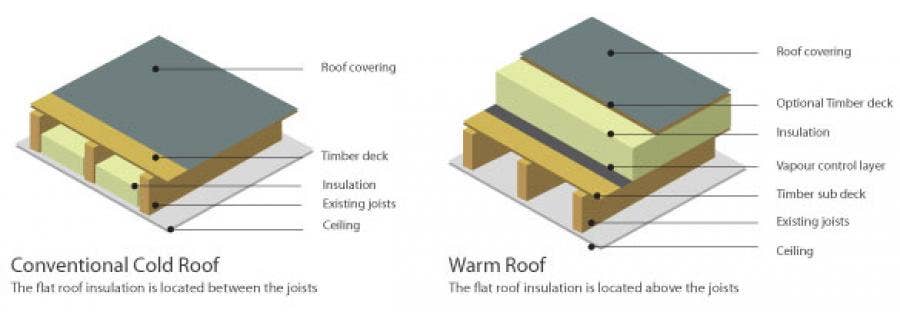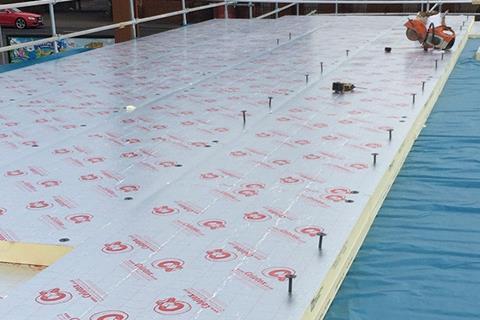Warm Roof vs Cold Roof. What’s the difference?

When it comes to insulating a flat roof, there are two options. Warm Roof vs Cold Roof. If you're unsure as to the difference between warm roof insulation and cold roof insulation, keep reading. Knowing the difference between a warm deck roof and cold deck roof can certainly make life easier.
Cold Roof
A cold roof isn't as cold as the title suggests. In this technique, insulation is laid between the rafters and since the only thing between rafters is empty space, this is a relatively low impact way to insulate your roof.
So why is it called a cold roof? Although the majority of the ceiling below is well insulated, the roof structure (rafters) are insulated, meaning on a winters day the cold will conduct through the rafters and into the room below. On a thermal imaging camera you would easily be able to spot where the rafters are situated by looking at the ceiling. This is because wooden rafters conduct heat much better than insulation, this is called thermal bridging.
While a cold roof may be an easy option when first creating a flat roof, if your looking to insulate an existing flat roof it can be a very time consuming one.
Insulating an existing flat roof requires ripping up any existing roof surface to enable you to lay the insulation in between, this also means that the roof surface has to be replaced or redone, again adding to the complexity of the job.
Warm Roof
A warm deck roof can be very simple to install and offers higher thermal performance at the cost of a higher roof profile.
The construction of a warm roof, the insulation sits on top of the rafters.
As opposed to insulating between rafters, the warm roof insulation is simply installed on top of the existing surface. If the roof surface is still in good condition you need only brush off any debris before securing insulation boards to it with adhesive and laying any type of flat roof covering on top.
Warm roof insulation ensures the entire roof structure is insulated, meaning a warm deck roof is more energy efficient than a cold roof.
The Breakdown - Warm Roof vs Cold Roof
A cold flat roof insulation requires more work, taking off old boards and replacing them and the roof surface. The thermal efficiency isn't as good as with warm roof insulation.
A warm deck roof is much easier to install, offers great thermal performance but adds height to the flat roof. As a result of the height difference, warm roofs cannot be used on balconies and flat roofs extensions with doors leading onto the roof. In these cases, a cold roof is a preferable alternative to warm roof insulation.

